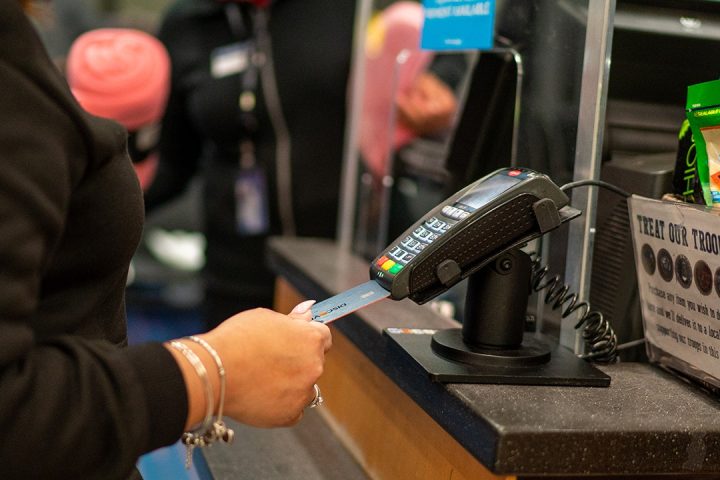Entering the holiday season with high-interest debt or financial struggles can put you at risk for a debt hangover that could linger for years.
It’s a crossroads that many will unfortunately encounter this holiday season. Credit card balances rose to over $1 trillion in the second quarter of 2023, according to a report by the Federal Reserve Bank of New York. The average rate for credit cards assessed interest as of August 2023 was 22.77%, according to data by the Federal Reserve. Compared with previous years, that rate is alarmingly high.
With interest rates sky-high, this is one of the worst times to charge expenses to credit cards that you can’t pay off quickly. Before you shop for the holidays, consider these ways to help you get clear on your goals and protect your finances.
Plus: 7 more ways to save that you may not have considered
1. Find a way to lower high-interest debt
If you’re already carrying debt, consider ways to save money on interest. Depending on your credit, some options may include:
- A 0% introductory APR balance transfer credit card: This card lets you move debt onto it from a different account to get the lower interest rate. The ideal card has no annual fee and a balance transfer fee of 3% or lower. Compare the cost of the fee with the projected interest payments on your current card to determine if it’s worth paying. (Read: 7 mistakes you don’t want to make with a balance transfer credit card)
- A personal loan: For multiple debt balances, a personal loan that consolidates debts into a single low-interest fixed payment can simplify your finances.
- A debt management plan: If you’re struggling to keep up with bills, a counselor at an accredited nonprofit credit counseling agency can determine your eligibility for a debt management plan that consolidates balances into a single low-interest fixed payment, for a fee. A lower interest rate is possible because these organizations have relationships with creditors, says Madison Block, a product marketing manager at American Consumer Credit Counseling.
Also explore your budget for opportunities to save, removing unnecessary expenses and swapping others for less costly alternatives. Then put any savings toward your debt, and contribute enough money each month to pay it down by the desired deadline. Commit to prioritizing your debt over the holiday season and tailor your purchases to facilitate that goal.
Read: Do you know your credit card’s interest rate? Here’s how much a few percentage points can cost you over time.
2. Create a holiday list
Building holiday spending into your year-round budget is a good way to prepare for seasonal expenses. But even if you know how much you have to spend, holiday shopping can overstuff your budget quickly if you’re not careful. One simple but powerful tool can help. Make a list and use the amount you have available to determine how much to spend on gifts, decorations, food, travel and any other holiday purchases.
Every Christmas, Lizbet Barajas, a Texas resident, sticks to a holiday list of expenses to stay on track with her goal to pay down student loan debt. With her husband, she budgets for gifts year-round for two kids, ages 3 and 6, and both sides of their family.
“Having that list early on makes it easier to know exactly what I’m buying them without having to do last-minute shopping, which then causes you to overspend,” says Barajas, a content creator of the YouTube channel Lizbet Talks Money.
Robyn Goldfarb, a Florida resident and blogger at A Dime Saved, also budgets year-round for Hanukkah to avoid taking on debt. With her husband, she budgets $50 per gift for their three kids, ages 2 to 10, and she only gives gifts on one of the eight nights of Hanukkah.
“One night we’ll do donuts, one night we’ll do cookies, so there’s something exciting happening every night, but it’s not necessarily a gift or something expensive,” she says.
Also read: 9 ways to manage the stress that the holidays put on you and your finances
3. Explore money-saving alternatives
Consider which expenses are negotiable and which aren’t. If necessary, stretch your dollars by changing expectations with friends and family this year. With prices still high due to inflation, they might welcome a more budget-friendly option, like a potluck, a secret gift exchange, gifts for kids only or a price limit for gifts.
Supplementing your income over the holiday season can also help you avoid debt for those must-have purchases.
“One thing people can do is potentially take on a seasonal part-time job or a side hustle,” Block says. “If you have some unused items or old furniture or things around your house that you aren’t even using, selling that on Facebook Marketplace or Craigslist could be potentially a good way to get a little bit of extra cash for the holiday season.”
Creativity can also lead to savings. It’s how Goldfarb saves on decorations.
“I’ll have my kids make things and I save them from year to year,” Goldfarb says. “There are so many ideas online.”
Also on MarketWatch: Spending like crazy? Struggling between paydays? Consumers are sending mixed signals ahead of the holidays
4. Set guardrails to stick to your budget
Switching your payment method temporarily to debit or cash can protect finances from debt. In previous holiday seasons, Barajas used a version of the cash envelope system to stay on track. By having an envelope with a fixed amount of money for every categorized holiday expense, like gifts, meals and travel, you can prevent overspending.
“It’s more visual,” Barajas says.
5. Look for deals
Scavenge for the best deals. Using browser extensions or apps, like Honey, Flipp or CouponCabin, may help you find coupons or potential savings on different items. Some large retailers such as Amazon
AMZN,
Walmart
WMT,
and Best Buy
BBY,
also have online outlets and open-box deals that may offer items at lower costs. Compare prices to know if it’s a good deal.
More From NerdWallet
Melissa Lambarena writes for NerdWallet. Email: [email protected]. Twitter: @LissaLambarena.
Read the full article here







